Mississippi Cannabis News
People In This State Googled ‘Medical Marijuana’ The Most, Study Shows
Published
1 year agoon

Marijuana growing at a facility located in Oxford, Mississippi. (Brad Horrigan/Hartford … [+] Courant/Tribune News Service via Getty Images)
How inquisitive are people in your state about medical cannabis? A recent analysis aims to find out—ranking states according to the number of Google searches for “medical marijuana” and other related keywords.
BioWellnessX, a hemp product eCommerce company, commissioned a study to analyze Google search data for a set of medical cannabis-related keywords for each state, then compared this with each state’s population to find which state is the most curious about medical cannabis.
The original study, “Which States Are The Most Obsessed With Medical Marijuana In 2024?” illustrates the levels of curiosity in each state, and some of the findings are unexpected.
Analysts gathered state-specific population figures from the U.S. Census Bureau and Google monthly search data on medical cannabis-related keywords to calculate the number of searches per 100,000 residents in each state.
Mississippi took the top spot with 294.59 searches per 100,000 residents, indicating how popular curiosity for medical cannabis is in the state.
“Mississippi shines at the top with an impressive 294.59 search frequency per 100,000 residents, reflecting the strongest curiosity in medical marijuana,” the study reads. “This interest, visible through its 8,660 monthly searches despite a population of just under 2.94 million, might stem from evolving local policies or a growing recognition of the benefits of medical marijuana.”
Mississippi was followed by Arkansas, ranking second, where the search volume is 233 for every 100,000. The state’s 7,160 monthly searches among its 3.07 million population show the curiosity level. Alaska came in third, with 222 searches per 100,000 residents. The state’s 1,630 monthly searches represent a relatively small population.
States you’d expect to see—like California or Florida—didn’t even scratch the top ten. Idaho residents were the least curious about medical cannabis: Despite being home to only 2 million residents, Idaho showed the lowest interest in medical cannabis, with just 2,520 monthly searches, translating to a search frequency of just 128.26 per 100,000 residents. Idaho was joined by states like South Carolina, and surprisingly Oregon, for the states with the lowest interest in medical cannabis, according to Google search data.
The study provides the following key findings:
- A total of 488,230 monthly searches nationwide signifies that medical marijuana has become a mainstream topic across the U.S.
- Mississippi tops the chart with 294.59 searches per 100,000 residents, indicating a significant shift in interest toward medical cannabis.
- Arkansas (2nd) and Alaska (3rd) closely trail Mississippi, each with 233 and 222 monthly searches per 100,000 residents, highlighting strong interest in medical cannabis in these states.
- Despite their large populations, California, Texas, and Florida don’t rank in the top 10. Significantly, crowded New York’s a close call at rank 17.
- Ranking at the lowest, South Carolina, Idaho, and Oregon show less engagement, with just over 129 monthly searches per 100,000 residents, indicating a relatively lower level of public curiosity in these states.
BioWellnessX’s Methodologies
In order to determine the interest in medical cannabis across U.S. states, a BioWellnessX representative provided Forbes with the following methodologies used in the study:
- Using SEMrush, total monthly search volume was tracked for the keywords “medical marijuana” and its related terms for each state.
- Recent population data for each state was sourced from the U.S. Census Bureau.
- To standardize the data for a fair comparison across states, we normalized it by calculating the number of searches per 100,000 residents by dividing each state’s total search volume by its population and multiplying by 100,000.
- Combining these two, the states were ranked based on their per capita interest in medical marijuana. Higher search rates per 100,000 residents indicated greater interest.
After combining the data and accounting for populations, they were able to standardize the data.
BioWellnessX’s methodology combines detailed search data with demographic insights, presenting a comprehensive view of the interest in medical cannabis across the country.
BioWellnessX sells hemp-derived products rich in cannabinoids in the form of products like Full Spectrum CBD Gummies, as well as products fortified with CBG, CBN, THC, terpenes, and so forth with an emphasis on physical well-being. They also sell a full range of tinctures and smokable products such as pre-rolls.
The research the company commissioned indicates a facet of where medical cannabis interest is growing, state by state.

Author: mscannabiz.com
MScannaBIZ for all you Mississippi Cannabis News and Information.
You may like
-


New study links cannabis use to heart disease risk
-
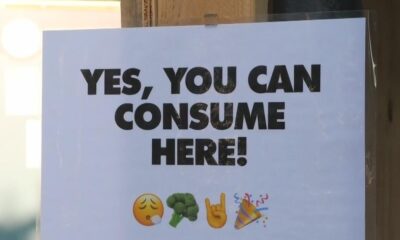

California State Fair’s cannabis use area grows in second year
-
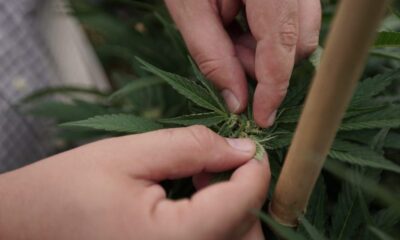

Today My Cannabis Brand Launches In West Virginia, Where I Spent Years Behind Bars For Growing Medical Marijuana (Op-Ed)
-


Multnomah Co. DA, police investigating alleged burglary ring targeting Portland cannabis businesses
-
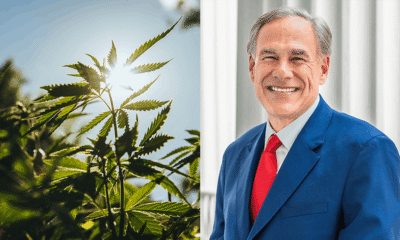

Texas Governor Calls Hemp Products ‘Lawful Agricultural Commodity’ in Special Session Notice
-


Local businessmen launch medical cannabis clinic in Louisville | Wdrb-video
Mississippi Cannabis News
Mississippi Cannabis Laws & Penalties in 2025
Published
1 day agoon
July 10, 2025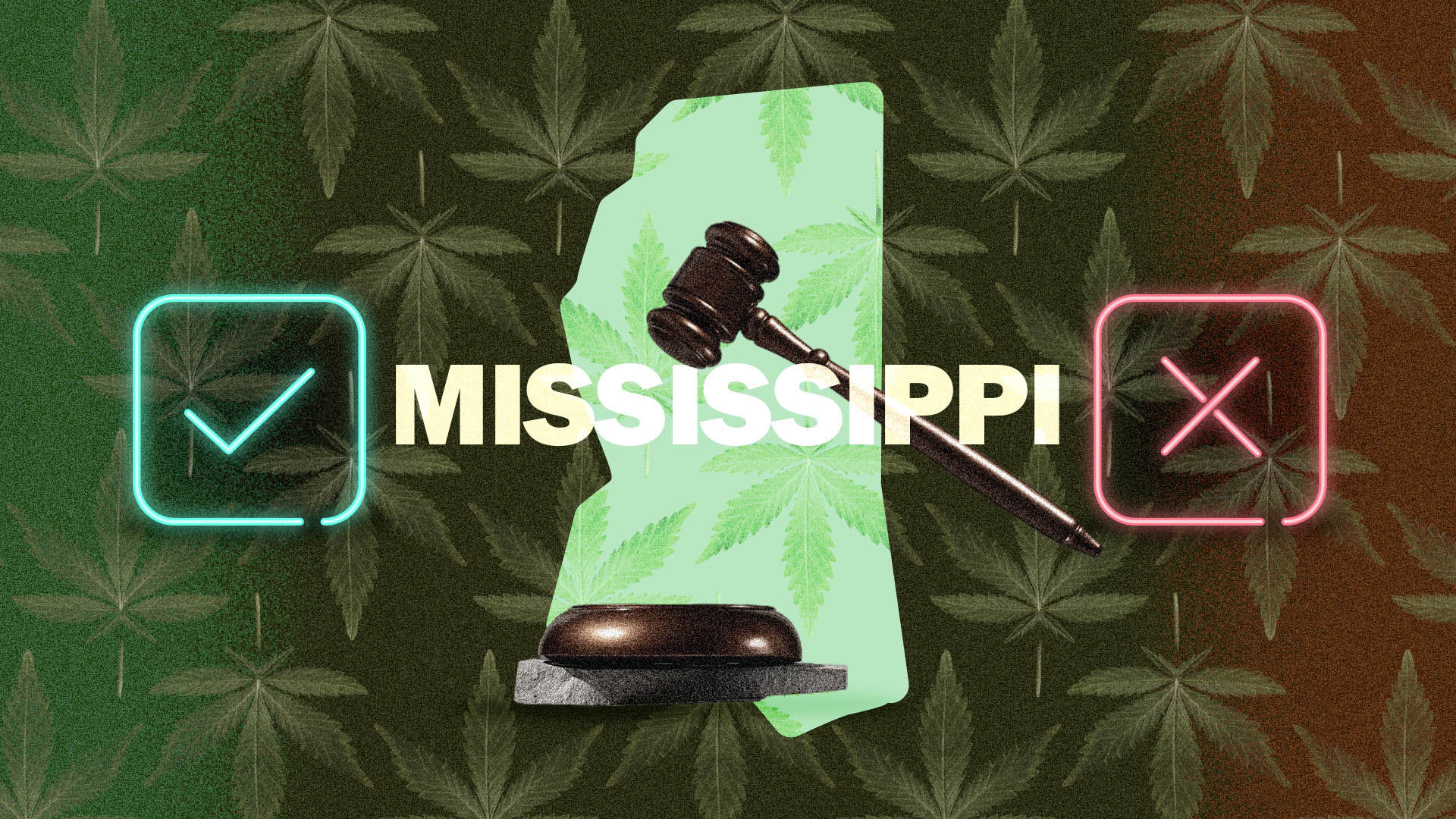
Key Takeaways
- Weed is not legal for recreational use in Mississippi, but possession of less than 30 grams is only punishable with a fine of between $100 and $250.
- Medical marijuana is legal, and qualifying patients can buy up to 3.5 grams of flower per day, six days a week, with a possession limit of 98 grams.
- Delta-8 THC is not legal in Mississippi, but some stores appear to sell it anyway.
Weed is legal for medical use in Mississippi but not for recreational use. However, the state has decriminalized possession of up to 30 grams, so recreational users are only punished with a fine in the first instance. Delta-8 is also illegal under state law.
However, the medical program is pretty comprehensive, although not in full swing yet, so you do have options if you want to consume cannabis. There are many rules you should know about before you light up, though.
Is Weed Legal in Mississippi?
Weed is legal for medical use in Mississippi and small amounts are decriminalized for recreational users. Possession of less than 30 grams is only punishable by a fine.
Is Recreational Weed Legal in Mississippi?
Weed is not legal for recreational use in Mississippi. It is decriminalized across the state provided you have less than 30 grams.
However, this is slightly undermined by the state still criminalizing paraphernalia such as pipes or bongs. There was also an attempt to get legalization on the ballot in 2022, but this failed due to what can only be described as the worst citizen initiative ballot process in the country.
Penalties for Possession
Since weed is not legal in Mississippi, there are punishments for possession depending on how much you have and how often you’ve been caught before.
The punishments are:
- For less than 30 g, the state has decriminalized possession, so the only punishment in the first instance is a fine of between $100 and $250. If you’ve been convicted in the previous two years, the fine is $250 and you can get up to 60 days in county jail. For a third (or subsequent) offense, the fine is from $250 to $1,000 and you can get up to 6 months in the county jail.
- If you have more than 30 g but less than 250 g, you can be fined up to $1,000 and sentenced to county jail for up to one year.
- For 250 to 500 g, you’ll be imprisoned for between 2 and 8 years and can be fined up to $50,000.
- For 500 g to 1 kg, the prison time can reach 16 years (4 minimum) and the fines increase to a maximum of $250,000.
- For between 1 and 5 kg, you’ll be imprisoned for up to 24 years (6 minimum) and fined up to $500,000.
- For more than this, the prison sentence increases to 10 to 30 years and the fines can reach $1,000,000.
Is Medical Marijuana Legal in Mississippi?
Medical marijuana is legal in Mississippi, following a legal battle ultimately culminating in the passage of SB 2095 in 2022.
The question first appeared on the ballot in November 2020, where it passed with a resounding 74% of the vote. However, the mayor of Madison challenged the initiative’s legitimacy, on the basis of an out-of-date law.
Old rules require that signatures from any one congressional district not exceed 20% of the total. This was such because Mississippi used to have five congressional districts, but it was redrawn in 2000 so it only contained four. This would mean it is literally impossible to successfully create a citizen initiative in the state.
The Supreme Court ruled that the initiative was indeed illegal, pointing out, “Whether with intent, by oversight, or for some other reason, the drafters of section 273(3) wrote a ballot initiative process that cannot work in a world where Mississippi has fewer than five representatives in Congress. To work in today’s reality, it will need amending—something that lies beyond the power of the Supreme Court.”
As a result of this ruling bumping up against the wishes of state citizens, politicians found sufficient middle-ground to pass SB 2095 in early 2022. After a lot of legislative work, the program is now up and running.
Medical Marijuana Patient Possession Limits
SB 2095 places limits on the amount patients are allowed to buy under the Mississippi medical marijuana program. In particular, it states that patients can buy 3.5 g of flower, 1 g of concentrate or 100 mg of THC in an infused product per day.
You can use this allowance 6 days in a week or 24 days in a 30-day period. The possession limit is set at 98 g of flower, 28 g of concentrate or 2.8 g of THC in infused products, equal to 28 Mississippi Medical Cannabis Equivalency Units (MMCEUs).
How to Get a Medical Marijuana Card in Mississippi?
The process for getting a medical marijuana card in Mississippi follows the pattern of most of the programs around the country.
The first step is going to visit a medical professional capable of certifying patients for cannabis use and being diagnosed with one of the qualifying conditions for the program:
- Agitation of dementia
- Alzheimer’s disease
- Amyotrophic lateral sclerosis (ALS), or Lou Gehrig’s disease
- Autism
- Cachexia, or wasting disease
- Cancer
- Chronic pain
- Crohn’s disease
- Glaucoma
- Hepatitis
- HIV/AIDS
- Huntington’s disease
- Multiple sclerosis
- Muscular dystrophy
- Neuropathy
- Seizures
- Severe and persistent muscle spasms
- Severe or intractable nausea
- Spastic quadraplegia
- Spinal cord disease or severe injury
- Pain that’s not responsive to opioids
- Parkinson’s disease
- Post-traumatic stress disorder (PTSD)
- Sickle cell disease
- Ulcerative colitis
After this, your physician will certify you for the medical use of marijuana if he or she believes it’s appropriate in your case. Within 6 months of receiving this certification, you can register for the online portal and, after you’ve verified your registration, submit your application for your medical marijuana card.
Can You Consume Weed in Public in Mississippi?
Although you can legally use weed for medical purposes, it’s illegal to smoke weed in public in Mississippi (page 31, lines 839-842). This would likely be punished in line with the fines for smoking in public places, so with a fine of $50 or $100.
Can You Drive Under the Influence of Marijuana in Mississippi?
It’s basically always illegal to drive under the influence of marijuana across the US, and Mississippi is no exception.
The state bans driving under the influence of any substance that impairs your ability to drive safely. There is also an implied consent law in the state, so by driving on public roads, you’ve already given your consent for blood, breath, or urine tests for drugs and alcohol. If you refuse, your license will be suspended for 90 days and the refusal itself will be admissible as evidence in court.
For the DUI itself, the punishments are:
- For a first offense, you’ll be fined between $250 and $1,000, put in jail for up to 48 hours or both. Your license will also be suspended for up to 120 days. In some cases, you can be made to attend a victim impact panel instead of jail time.
- For a second offense (within 5 years), the fines increase to between $600 and $1,500, you’ll receive between 5 days and six months of imprisonment and get between 10 days and six months of community service. Your license will be suspended for 1 year, your vehicle could be impounded and you’ll be assessed to see if you need substance abuse treatment.
- For a third offense (within 5 years), it becomes a felony. You’ll be fined between $2,000 and $5,000, will be sentenced to between 1 and 5 years imprisonment, your vehicle will be seized and your license will be suspended for the length of your prison sentence. You’ll also only be allowed to drive a car with an ignition interlock device for three years after your release
- For a fourth or subsequent offense (in any time period), the fine increases to between $3,000 and $10,000, and you’ll be imprisoned for between 2 and 10 years, your license will be suspended for the whole period of the sentence, and for 10 years afterward, you’ll only be allowed to drive a vehicle with an ignition interlock fitted.
Is Delta-8 THC Legal in Mississippi?
Delta-8 THC is technically not legal in Mississippi.
Although the state passed SB 2725 in 2020, which defines hemp (page 3, lines 51-57) in line with federal law, the state’s controlled substances bill (pages 9-10, lines 212-225) uses a broad definition for THC, including isomers like delta-8.
Additionally, the exemptions from the controlled substances bill for “hemp” and “hemp products” are not as straightforward as in most states, and it’s possible that no hemp products are actually legal in the state.
However, stores do sell hemp products regardless.
RELATED: Where Is Delta-8 THC Legal? A State-by-State Guide
Is Weed Decriminalized in Mississippi?
Weed is decriminalized in Mississippi.
Possession of less than 30 g is only punishable by a fine of between $100 and $250 in the first instance. However, the second offense within two years is punishable by a $250 fine, up to 60 days in county jail, and participation in a drug education program. A third offense rises to a maximum $1,000 fine and 6 months in county jail.
So technically, weed is decriminalized in Mississippi, but only for small amounts and the first time you get caught. This is good, in that you won’t get jail time right away, but it moves to a criminalized system pretty quickly for subsequent offenses.
Is Growing Weed Legal in Mississippi?
Despite legalizing medical marijuana, Mississippi does not allow patients to cultivate their own marijuana. And of course, if you’re a recreational user you can’t grow weed either.
Punishments for cultivation are dependent on the amount of cannabis produced and fall in line with the amounts listed in the “Penalties for Possession of Weed in Mississippi” section above.
When Will Weed Be Legal in Mississippi? The Future Outlook
There have been attempts to legalize marijuana in Mississippi, but overall it is likely to be an uphill battle.
The story of the medical cannabis law really shows the issue quite clearly. While most marijuana legalization bills are citizen-led initiatives, the Mississippi court made it clear that no such initiatives are even possible in the state at present.
Over 70% of voters were in favor of this change, but a small-town mayor was essentially able to derail the whole process. Not because of an argument about the bill being fit-for-purpose or having issues that needed to be addressed, but through a loophole that had opened up in state law.
The point of revisiting this story is simple: it took several years to get a medical bill on the books in Mississippi, and there is very little citizens can do to push the issue at present. An attempt to expand the medical cannabis law in 2024 was ultimately unsuccessful, and attempts to rectify the issues with the citizen initiative process have similarly failed.
So it seems unlikely that the state will legalize weed any time soon, despite a 2021 poll suggesting that 52% of state residents support legalization. In fact, the federal government might beat them to it.
Conclusion
Weed is decriminalized in Mississippi, and you can use it for medical purposes, but Mississippi weed laws don’t allow recreational use.
If you have a qualifying condition, you can buy 3.5 grams of cannabis a day with a total possession limit of 98 g, and if you have less than 30 g and no prior convictions, the risks are minimal.
Unfortunately, though, despite some positive indications and broad support among the public, Marijuana laws in Mississippi are still quite strict in many areas.

Author: mscannabiz.com
MScannaBIZ for all you Mississippi Cannabis News and Information.
Mississippi Cannabis News
The future of cannabis research and regulations
Published
2 days agoon
July 10, 2025
Americans are now more likely to use cannabis than alcohol on a daily basis. But as cannabis use continues to climb, are research and policies keeping up?
Today, On Point: The future of cannabis research and regulations.
Guests
Maia Szalavitz, reporter covering science, public policy and addiction treatment. Contributing opinion writer at the New York Times. Author of “Undoing Drugs: The Untold Story of Harm Reduction and the Future of Addiction.”
Ziva Cooper, professor in the Department of Psychiatry and Biobehavioral Sciences at the University of California, Los Angeles. Director of the UCLA Center for Cannabis and Cannabinoids.
Mahmoud ElSohly, director of the Marijuana Project at the University of Mississippi, which, for more than 50 years, was the only grower approved by the National Institute on Drug Abuse for cannabis research.
Also Featured
Jonathan Caulkins, professor of operations research and public policy at Carnegie Mellon University.
Transcript
Part I
(MONTAGE)
DAN: I’m 76. I use the edibles every day, and I use it to combat frustration over being invisible as an older American, and also it just makes me feel really good.
AMY: I’ve never been a big alcoholic drinker. However, to help me fall asleep at night, I do take Delta-8. which has a small amount of THC in it.
WILLIAM: I have been a daily cannabis user for over 40 years. I have maintained good health, good business, everything functions well, I have no pain, I take no medications, I’m 62 years old, and I’m a happy guy. Weed gives you positivity.
MEGHNA CHAKRABARTI: That’s Dan in Charlotte, North Carolina, Amy in Milwaukee, Wisconsin, and William in Edgewood, New Mexico. Just a few of the On Point listeners who shared their experiences with cannabis use. And obviously, they are not the only ones in this country. In fact, daily marijuana use is now more common than daily drinking in America.
JONATHAN CAULKINS: Back in 1992, there were about 10 times as many Americans reporting daily or near daily drinking as daily or near daily marijuana use. But since then, per capita rates of daily and near daily cannabis use have increased 15-fold and now actually exceed the rates for alcohol use.
CHAKRABARTI: Jonathan Caulkins is a cannabis policy researcher at Carnegie Mellon University, and he published these findings in a study in May. The study looked at cannabis use data from the National Survey on Drug Use and Health. And it looked over a 43-year span starting in 1979. Now, to be clear, there are still more Americans who drink alcohol in absolute numbers than those who use marijuana in absolute numbers.
The new thing about marijuana is that about 40% of those users are using it at least near daily, according to the study. That’s an estimated 17.7 million people. Professor Caulkins says there could be a few reasons why this change is happening.
Cannabis use is now more socially and culturally accepted. There are fewer legal risks as states have changed their laws around marijuana.
CAULKINS: But the other factor, very important that people talk less about, is an enormous decline in the price per milligram of THC. When we put together the data that we have, both from the illegal market, say from undercover buys and user self-reports on websites, and the official data that we have now in the legal markets, we’re seeing declines on the order of 80% without adjusting for potency, and when you factor in the greater potency, 90% between, say, 2008 and the present.
At the end of the day, cannabis is a consumer good, and when prices go down, people tend to consume more.
CHAKRABARTI: Okay, now specifically, when it comes to this daily use of cannabis, we’re talking about all forms of cannabis. As for smoking pot, specifically, about 15% of Americans say they smoke marijuana today, compared to just 7% back in 2013, according to Gallup.
That Gallup survey question specifically asked this, keeping in mind that all of your answers in this survey are confidential, do you, yourself, smoke marijuana? Okay, so given that question, the poll doesn’t actually have higher resolution detail on why people smoke and how much they’re smoking.
Now, Professor Caulkins says that while growth in daily cannabis use makes sense, it should also be cause for concern. Because relatively little is known about the behavioral and health consequences of consuming higher potency forms of cannabis or much larger amounts.
CAULKINS: There have been excellent studies done, randomized control trials in the laboratory exposing people to THC, but the doses involved in those studies are often on the order of 20 or 40 milligrams. And if you realize that the average daily user is consuming something like 1.6 grams of flower per day, that’s 20% potent.
That’s 320 milligrams of THC, just vastly more than has been studied in most of the studies that we have available to us now.
CHAKRABARTI: Oh, in other words, it’s something like at least eight times more than the studies have had a chance to research. So today we’re going to talk about this rise in daily cannabis use in the United States.
Again, it’s superseding daily alcohol use, and we’re going to take a look at whether there are dangers in the gap between increased cannabis consumption and research and regulation. So we’re going to start with Maia Szalavitz. She’s a reporter covering science, public policy, and addiction treatment.
She’s also a contributing opinion writer at the New York Times and author most recently of Undoing Drugs: The Untold Story of Harm Reduction and The Future of Addiction. Maia, welcome to On Point.
MAIA SZALAVITZ: Thank you so much for having me.
CHAKRABARTI: So what’s your first thought on this this increase in daily use of cannabis amongst Americans?
SZALAVITZ: So there’s a lot of complexity here, unfortunately. One is that a lot of people use marijuana for medical reasons. And if you’re doing that, you are likely to be doing it daily. So that’s one thing that’s different from alcohol, although I will note that during alcohol prohibition, there was actually medical alcohol, as well.
The other thing that I’m not sure Dr. Caulkins has looked into, but I’d be really curious to know about, is recently health recommendations have changed around alcohol. It used to be considered the case that if you have one or two drinks a day, that’s actually good for your heart. And that has changed.
So the amount of daily alcohol users may also be going down. So there’s that complexity. The other thing that we see is that older users are the people who are using more. The people we tend to be worried most about when it comes to marijuana is teenagers. And astonishingly and amazingly and greatly, teenage use has not risen during the falling price of marijuana or during the legalization of it, which is good.
Teen use has actually stayed steady or even declined.
CHAKRABARTI: Yeah, that is so interesting, and we’re going to talk about that more a little bit later in the show. Can you take me more into these nuances? And you said it’s unfortunately complex?
I think it’s fortunately complex and nothing is ever truly straightforward, which is why we have experts like you on, Maia.
I wonder if there is also a social and legal aspect to the increase, particularly amongst older Americans, as you’re saying. Because, as we talked about earlier, because of legalization in many states and the social de stigmatization that comes along with it, it was very easy for us to just put one notice out to listeners asking if they were daily users of cannabis and we got a lot of responses back.
People, it’s not something that, unlike 20 years ago, you felt like you needed to hide.
SZALAVITZ: That is true. And there’s definitely, when you’re doing these surveys, it’s very hard to tell about things, because oftentimes people will tell you what you want to hear. But the ongoing surveys seem to be pretty reliable.
What’s interesting to me about the older people is that, for example, women in perimenopause and menopause tend to have an enormously difficult time sleeping. This may be accounting for that. I don’t think those users are using anything more than 5 to 10 milligrams of edibles. They’re not even smoking.
And so when you ask the question about smoking, you are leaving out these people potentially, also. And that’s a large population.
CHAKRABARTI: Yeah, no, point taken. And I think that’s why we separated out the smoking figure, just to get a sense of how much smoking was going on versus the other forms of consumption.
And Professor Caulkins, I think his overall study was overall all forms of consumption. So we don’t exactly know what the breakdown is, internally to that. But to your point, or also about women. Do we know if the gender gap, is there a gender gap in cannabis use now?
SZALAVITZ: That’s an interesting question and I have not looked at that lately. Historically there has always been a huge gender gap in terms of addiction, where two thirds of people with addiction tend to be male. This, in terms of alcohol, it has been that gap has been closing and also in terms of other drugs, to varying degrees.
But when you look at the extreme end of the spectrum, which is people with addiction, it tends to be dominated by men. And in terms of social acceptability, it has always been more acceptable for men to use substances to get high than it is for women.
CHAKRABARTI: Can we turn our attention just for a second to the drinking part again, because I think you raised a really important point there.
These studies do rely on self-reports, and I actually wonder if there’s been a flip, right? Perhaps now, to your point earlier about recommendations on alcohol, perhaps the social stigma now is on self-reporting of daily drinking, and that might be suppressing those numbers.
SZALAVITZ: That’s always possible and it is really difficult to tell.
One thing we do know is that self-report is reasonably reliable when you have statements like this is completely confidential, and when people will not be punished for telling the truth. But, again, it’s difficult to know.
CHAKRABARTI: Okay. So then tell me overall, what do you think about, at least as far as we can understand, increase in use means, including medical use of marijuana, is it a risk-free activity?
A lot of the people who called us to leave their stories seem to believe that it is.
SZALAVITZ: I don’t think anything is risk free. And I think a lot of people balance risks that they take. For example, it is definitely less risky than daily drinking. And if you are taking it by means of edibles, it’s way less risky than smoking.
The statistics on smoking marijuana and lung cancer have long been interesting, because they didn’t find any correlation, which obviously is not the case for cigarettes. So it would be concerning if people were consuming massive amounts of smoke with tar in it. If they were smoking marijuana the way they smoke cigarettes.
But again, we now have vaping and there’s a lot of other things going on. So it makes it very difficult to tell. The issues related to marijuana use have historically been ones that we worry about in teenagers are they doing well in school? Are they driving? And driving could be an issue here, but again, the research is pretty clear that if you drive on marijuana, not that you should, it is less safe than driving sober, but it is more safe than driving while on alcohol.
Although if you mix the two, that’s more dangerous.
Part II
CHAKRABARTI: Let’s listen to a couple of On Point listeners who called in with their stories of cannabis use. Here’s Anna Ruth Shipman in Silver Spring, Maryland.
ANNA RUTH SHIPMAN: I’m not surprised by the findings. When I was young, back in the ’70s, at the age of 15, I started using both alcohol and cannabis and found both had bad side effects, but I find the side effects of cannabis to be less than the side effects of alcohol.
CHAKRABARTI: That’s Anna Ruth Shipman in Maryland, and here’s Evan in Ames, Iowa, with a very similar feeling.
EVAN: I’m a cannabis user because it’s much preferable to the effects of alcohol, still be somewhat functional, I don’t wake up feeling terrible. And it doesn’t come with all those added calories.
CHAKRABARTI: That’s Evan in Ames, Iowa, and we’ll hear from more On Point listeners in just a moment. I’m joined now by Ziva Cooper. Ziva Cooper is a professor in the Department of Psychiatry and Biobehavioral Sciences at the University of California, Los Angeles, and director of the UCLA Center for Cannabis and Cannabinoids.
Professor Cooper, welcome to you.
ZIVA COOPER: Thank you so much. It’s a pleasure to be here.
CHAKRABARTI: Okay you heard Maia at the beginning of the show, raise the first wrinkle here, which is really important. That with this new finding of daily cannabis use, we don’t yet have information on how many people are using it for medical purposes versus recreational purposes.
And we also don’t know the breakdown in terms of types of consumption. Smoking, edibles, etc. Why would it be important to know these things, Professor Cooper?
COOPER: So we know that the effects of cannabis in the short term and the long term are impacted by the reasons why people are using, and the ways that they are using it, including the numerous emerging types of products that I think Dr. Caulkins mentioned before with the increased potency.
So the increased THC concentrations of these products, the increased variety of products that are available. So Maia mentioned the vape pens, the different types of oral products, but also another important point here is that when we think about daily use, one critical variable to consider is not just how people are using it or why they’re using it, but also the frequency.
How often are they using it every single day? In our own experience, there are people who are using cannabis daily, but they’re taking a puff or taking an edible once before sleep. But then there are also people who are using or smoking many joints per day, and so you would imagine that the effects are going to be quite different in the short term and long term.
CHAKRABARTI: What are the obstacles to getting that kind of data on use patterns in this country?
COOPER: So there are a number of obstacles, and it really depends on how you’re going to approach answering the issue. And one way that we’ve just heard about in approaching this question is where Dr. Caulkins looked at large survey data, population data. Where we’re able to look at behavioral patterns in millions of people. And that is really powerful.
But as you discussed before, there are certain gaps. There are nuances that are not captured, that have really important implications. Another way to study the effects is look directly at the impact of cannabis and those different constituents of the cannabis plant, and the different ways that people are using them to actually study it.
So to give it to people, and compare it to a placebo, so a inactive drug or a sugar pill. And look to see if in people who are using it every single day, are the effects going to be quite different than people who are not using it regularly, both for potential medicinal effects. So the reasons why people might be using it for medicinal reasons, such as pain or sleep, as well as some of the adverse effects that Maia touched on, including, you know, attention, memory, intoxication, things like that.
CHAKRABARTI: So Maia, this brings us to one of the major hurdles in terms of gathering that research or doing the research and gathering that data. Because as far as I understand, as of this broadcast, marijuana is still a Schedule I drug in the United States, correct?
SZALAVITZ: That is true.
CHAKRABARTI: And so that means what kinds of restrictions are placed on the research of marijuana?
SZALAVITZ: Yeah, so it’s as though you’re doing nuclear research, because you have to track every tiny bit of it. You have to have special safes, you have to have all kinds of special procedures, and you have to obtain the marijuana from only specific sources. So doing this type of research can be really difficult and expensive because of all the restrictions.
It is as though, like the way methadone clinics have that drug locked down, you have to lock down the marijuana, which is, it’s ridiculous in both cases, but it ends up creating a real hassle for everybody who tries to do it.
CHAKRABARTI: Okay. My understanding is though that, I can’t remember exactly when, but there was very recently, the DEA made some noises about taking it, taking marijuana off of Schedule I and rescheduling it to, I don’t know, another level where it could be easier to perform research, and you could actually get the research materials, the cannabis from different locations, rather than like the one federally approved grower.
SZALAVITZ: Yes. President Biden actually ordered the rescheduling. And so it is in the process of doing so, because it’s an enormously complex bureaucratic process. Nobody has ever really done this before. And there were a lot of measures for scheduling drugs and making them illegal and very few processes for doing the opposite.
And the DEA’s role is complicated here, because it obviously wants to protect its turf and have control over as many substances as possible. Meanwhile, that may not necessarily be in the interest of the general public. And unfortunately, it’s not the health agencies that make the decision about whether something should be legal or illegal, or about how to regulate. It is the law enforcement agency that does.
CHAKRABARTI: Professor Cooper. Did you have some thoughts on this?
COOPER: Yeah, so it is a really interesting turn of events. And in May 2024, the Department of Justice issued a draft ruling moving cannabis marijuana. So that’s cannabis with a certain amount of THC, from Schedule I to Schedule III. And it signified a couple of really important shifts in how the government is thinking about marijuana.
So in that report, it talks about how, as a Schedule I substance, there was no accepted therapeutic use for the drug. But with a movement to Schedule III, there is a acknowledgement of the therapeutic effects of marijuana, of THC and marijuana. And so that was really important. Now, whether or not it eases research, I think it really remains to be seen. Because there are many other variables, not just the Schedule I classification, that limits the restrictions or the obstacles for research.
CHAKRABARTI: Yeah. So we’re going to go down a little bit of a rabbit hole on what you just said, Professor Cooper, because to be clear to folks, it was back in 1968 that the federal government finally allowed research on cannabis, but they limited it to just one grower. That grower is at the University of Mississippi.
And one grower can’t grow enough to satisfy just research needs. But as you guys have both been talking about, in 2016, there’s signals from the federal government that would change. By 2019, DEA decided to move forward on applications, because they were actually facing a lawsuit for not expanding the number of federally approved growers.
And in 2022, DEA finally registered those additional growers for research. Let’s go to the original place where researchers can get cannabis/THC for study, and that is at the University of Mississippi, and Mahmoud ElSohly joins us now. He’s director of the Marijuana Project at the University of Mississippi, and previously the only approved grower by the National Institute on Drug Abuse for Cannabis Research.
Mahmoud ElSohly, welcome.
MAHMOUD ELSOHLY: Thank you. Good to be with you.
CHAKRABARTI: Okay, so first of all, tell me a little bit about what it’s like growing cannabis for research. How meticulous is it? What’s the process?
ELSOHLY: The process, first of all, the growing or production of cannabis itself, the process itself for doing that is really a rather simple process, because the plant is a very cooperative plant. It’s just very easy to grow, very easy to control, doesn’t really get affected that much by pests and things like that, so if you give it good environmental conditions and good fertilizing and good soil, it grows literally like weed.
So it’s a very easy plant to grow.
CHAKRABARTI: Professor ElSohly, does, what is grown at the University of Mississippi? What, is there variable potency in the THC in the plants that you grow?
ELSOHLY: Yes, we have every kind of material that any investigator around the country would like to use or would like to investigate.
Starting from, we, of course, we have to have a placebo material, which is cannabis plant material that has been, all the cannabinoids and all the other components have been removed, so that’s what we call the placebo. So from placebo material to maybe 1% THC content, 2%, 4%, 8%. And that has been, up to 8% has been traditionally what was available in the program, until maybe a couple, two, three years ago.
Now investigators started looking for materials that match what is available in the dispensaries or in the illicit market, which is materials that are maybe 14%, 15% and above. That would be considered as high potency. So we have actually produced those types of material. We have materials that are, go all the way up to 27%.
I just published a paper not too long ago. Where we compared the potency and the chemical profile of the materials that we have under the United Drug Supply Program, with materials available in dispensaries around the country, and in the illicit market, from all the different states, all the different regions of the U.S.
And we can definitely, certainly, no question, match any materials that any investigator would be looking for the use in their research, which this material was not available before, simply because there wasn’t really that much demand for it, that’s number one. Number two is, and this is a very important thing, the material that is produced in the national program, the drug supply program, is mainly used to manufacture cigarettes for smoking.
And the research shows, and these have to be standardized marijuana cigarettes. And the weight of that cigarette is somewhere between around eight tenths of a gram per cigarette. And so the subjects that are involved into a clinical trial, that is a randomized, placebo-controlled trial, will, everybody will have to get the same exact type, same shape, same form, same everything.
Only thing the difference would be the potency of the THC in that cigarette.
CHAKRABARTI: I just have to jump in here, forgive me professor, but I do have to just jump in here and say I’m Meghna Chakrabarti. This is On Point. Now I actually appreciate a great deal your detailed answer on the sort of variety of potencies that you can produce for research.
And earlier this year, a health care analytics company called Truveta found that rates of cannabis induced disorders grew more than 50% between 2019 and November of 2023. Dr. David Schreiber is a psychiatrist and CEO of Compass Health Center, and he told CBS News one of the reasons why.
Cannabis today is different than cannabis of previous generations.
DAVID SCHREIBER: In the 1990s, we had potency concentration of THC and cannabis hovering around 4%. Today, that number is closer to 20%. So 5 times the greater amount of potency. We know because of technology today that there are products being marketed out there that are able to achieve 90% potency. And there are a lot of studies that are shown out there that increase potency concentration also correlates with increased adverse events.
CHAKRABARTI: Professor ElSohly, I have one more question for you. And that is obviously you’re at the forefront of the source of materials for cannabis related research. Are there any specific additional policy changes you’d like to see around this research so that we can actually close the gap in our understanding of positive or adverse effects of the kinds of cannabis on the market today?
ELSOHLY: Thank you. I honestly think as hard as the regulations have been and as difficult as it has been, as Dr. Cooper indicated to deal with, the working with cannabis and doing research with cannabis, because of all the regulations, that everything has been and still is in place for anyone who is really interested and wants to put the time and the effort to do a particular study.
Everything is there for that person to do what they want to do. Now the increase in the potency that we’re talking about, and the fact that there’s so much THC in there, this is when you have, when the use of cannabis is what we call ad libitum, meaning you just use as much as you want to use to achieve the end point that you want to achieve.
That’s not what’s happening when you do standardized clinical research, and at the end of my previous talking, I was going to tell you that in the clinic, in the actual clinic, nobody, no one, no matter what their experience with the use of cannabis, was able to finish the 8% THC marijuana cigarette.
CHAKRABARTI: Ah.
ELSOHLY: When you have an 8% And you can’t use it, of course, you cannot use the same amount of material in a cigarette at 15% or 20% or more percent. So the increase in the potency just allowed the people to use a smaller amount of the cannabis material to reach the goal they’re trying to achieve.
The total amount is the same, whether you use a 4% or a 20%. You’re using the same amount of THC to reach the end point that you want. But now, because of the development of the vapes and all of that, people can use the higher potency material, small amount of THC plant material to reach the goal they’re trying to reach.
Part III
CHAKRABARTI: I just want to give our listeners a little bit more of a voice here.
This is Michael Allen from St. Paul, Minnesota, who tells us he’s been a daily cannabis user for about eight years, and it’s been incredibly helpful to him.
MICHAEL: When using cannabis, I use concentrate with an electronic vaporizer. And I only use it while I’m in my own home. For me, cannabis helps to slow down my mind when stressed and break intrusive thought cycles that have in the past led to severe depression and anxiety.
But I also enjoy cannabis as a recreational substance, because I can better control my consumption. And even if I do overdo it, I feel in control of my body and mind, which is something I have never felt with alcohol.
CHAKRABARTI: So that’s Michael in St. Paul. Here’s another on point listener, former member of the United States military, lives in Massachusetts.
He talked about his preference for marijuana over alcohol.
ON POINT LISTENER: I began to use marijuana as a civilian, and it became exceedingly a better alternative to alcohol. Obviously, there are consequences to using and smoking marijuana, but like I’m not blackout, belligerent, making stupid decisions. Your faculties are more there when you smoke.
Your judgment is present. It’s not debilitating in ways that alcohol is.
CHAKRABARTI: Professor Cooper, let me ask you, these two comments are very interesting to me, because how much do we know about what a cannabis user is feeling about their relative level of control or clarity of mind, versus what is actually measurable in terms of the level of control they have over their bodies while consuming cannabis?
COOPER: Meghna, I think this is a really interesting point that also points back to what Dr. ElSohly was talking about with respect to this idea that even though the products are higher potency, have more THC, people just take less. So they titrate to get to their desired effect. And so people like your listeners who are reporting in, overwhelmingly they’ve had, it sounds like they’ve had positive experiences, and they’re talking about why they’ve chosen cannabis over alcohol.
But there are people who have had uncomfortable and adverse experiences, and sometimes that has to do with the fact that there’s over intoxication, or they’ve taken an edible and it got them too high for too long of a period of time. So in the laboratory, we’re able to look at and ask people how they feel.
We asked them a range of feelings that they have. So we don’t just ask them how high they feel. We ask them about the type of high. Is it a good high? Is it a bad high? Would they like to take that cannabis again? We also ask them if they feel anxious, right? So feelings of anxiety are common, especially with people who don’t use cannabis all that often. When they use too much, feelings of anxiety can be perceived as a negative effect.
Some other researchers look at psychotic like experiences, and this is, I think, one of the primary health outcomes that people are becoming more and more concerned about, especially in youth or adolescence. But what’s interesting about the —
CHAKRABARTI: I’m sorry, I’m so sorry, I didn’t mean to interrupt, but with the question of youth, though, are there ethical restrictions around doing actual studies that involve young people who aren’t even legally old enough to purchase cannabis products?
COOPER: Absolutely. And as Maia said before, that when we’ve looked at the surveys, it’s actually been a relief that when you look at youth up to 18 years old, we haven’t seen changes and increases in use. But we’ve heard from emergency room physicians that there seems to be increased incidence of younger people coming in for psychotic like disorders that are associated with cannabis.
But in the laboratory, we can look at this emerging adult category. And actually, adolescence goes up to age 24. The brain is still developing until that time. And so we have a study where we’re comparing the effects of both oral and smoked cannabis. In 18- to 25-year-olds.
So the people that are in this vulnerable period, and we’re comparing them to middle aged adults, so 35 to 45, as well as those older adults, that weren’t, we know are increasing their use, but we know very little about the effects, and cannabis might have a very different effect in people who are 55 and older. And so we’re looking at that now.
CHAKRABARTI: Interesting. Maia, bring your experience to the table here, because what I keep hearing is that even though we’re actually in quite a new place, research wise, in terms of trying to understand the various effects, again, both positive and adverse, of cannabis consumption.
There are still significant restrictions. Some of them are ethical, which we don’t necessarily want to let go of. But at the federal level, do you see there being too many obstacles for the kind of follow up research that we would need to answer a bunch of the questions that both of you have actually even just raised in the context of this hour?
SZALAVITZ: Yeah. I think it was always bizarre to have cannabis and Schedule I anyway, because schedule, the whole scheduling system is irrational in the first place. Schedule I includes LSD, marijuana, and heroin. It’s hard to imagine three more different substances. And that schedule is a higher, more restricted schedule then the schedule in which fentanyl appears. And this is because fentanyl, we have decided, as a country, has legitimate medical uses, but heroin does not.
So it’s just a mess. The reason that things are classified the way they are is completely political and has nothing to do with science. I personally think we need to scrap the scheduling system and come up with a new one that actually reflects the real risks and the real benefits. And whether medical use is possible for all of the substances, because we just do this in a terrible way.
Taking marijuana out of Schedule I and putting it in Schedule 3 would be definitely progress. It’s difficult to know what’s going to happen in the next administration, and whether that change will actually go through now that the administration is changing. But yeah, we certainly need to deregulate this area.
CHAKRABARTI: Interesting. We’re going to come back to what may happen under the next Trump administration in a second, but the sort of the inconsistency that you’re talking about, that’s led to different things being scheduled differently. The fentanyl comparison is quite something. Are there other countries that you would point to that do this better?
SZALAVITZ: Not really. Unfortunately, the United States has had an incredible dominance over drug policy in the world. And part of that is because, for a while, it was the one thing that the Soviet Union and the United States could agree on. We all hate drugs. We’re all going to crack down on them. And they’re really, in terms of the scheduling system, it’s imposed by the U.N.
CHAKRABARTI: Okay. Interesting. Professor Cooper, what do you think about that?
COOPER: I think in general, it’s important to remind ourselves that the scheduling system is, there are serious issues with it. But the scheduling system also relates to drugs that have been approved, that have been rigorously studied for certain therapeutic endpoints.
So fentanyl and cocaine is also, it’s Schedule II, it’s not Schedule II. So cocaine has been acknowledged to have therapeutic use, and that’s because it’s used in a prescribed manner. Now, certain drugs are not scheduled at all, right? Alcohol, tobacco, they are not in the Controlled Substance Act.
And so this is another route to go. So here, we’re talking about moving marijuana, so cannabis with more than 0.3% THC from Schedule I. No accepted use, federally legal, to Schedule III, where it has accepted medical use, and can be used under federal law for that purpose. But it’s important to remember that even if it moves to Schedule III, only certain types of products will fall in that category, and it will still not be legal to use it outside of that Schedule 3 category.
So it will be different than alcohol and tobacco. And so there will still be restrictions and there will still be issues with that.
SZALAVITZ: Well also —
CHAKRABARTI: Maia, did I hear you? Yeah, go ahead.
SZALAVITZ: Oh yeah. I was just going to say that it, again, the insanity of the scheduling system is reflected in the fact that alcohol and tobacco are not scheduled.
The fact is that we really don’t have a good way of regulating recreational drugs. We have no way for somebody to get a new safe one approved if such a thing existed. And so it’s really difficult to do things like, okay alcohol is objectively more harmful than marijuana. How do we account for that in terms of advertising and regulation?
Tobacco is more harmful than all of them. How do we deal with this in terms of that? And how do we put them in context? Because these things can substitute for one another at various times. People throughout the show have been talking about how they prefer marijuana to alcohol.
CHAKRABARTI: Maia, since you did very aptly reference back to our listeners, who have been sharing their stories of cannabis use, here’s a couple more. This is Matthew Hernandez in Denver, Colorado. Matthew recently quit using cannabis. He’s in his mid 30s now, but he used to be a daily consumer.
MATTHEW HERNANDEZ: The culture in Denver specifically had always been friendly toward marijuana users. There was a time that it was assumed that you smoked unless you specifically said otherwise. I would, as they say, wake and bake, and would attend school, work, I felt like it really locked in my focus. It was a great social lubricant. That’s how I bonded with a lot of my friends. That’s how I met a lot of friends.
CHAKRABARTI: So that’s Matthew in Denver. Here’s Grayson in Cedar Rapids.
GRAYSON: I began smoking marijuana at 18, my senior year of high school. And at 65, I’m retired now and pretty much out of regular smoking in my mid-fifties. These days have turned to unprescribed CBD concentrations to ease arthritic pain.
I’m an avid bike rider, too, and also as an occasional sleep aid. To get out of the house and supplement my retirement income, I applied for a school bus driving position. But tested positive, of course, for THC. However, despite not having so much as a parking ticket since my 30s, my employment was rejected.
CHAKRABARTI: So that’s Grayson in Cedar Rapids. And here’s Michael Mirtica in Duluth, Minnesota.
MICHAEL: I have smoked cannabis, vaped, edibles, etc., for a good 15 years of my life now. I’m 30 years old and I started way too young. But the truth is that there is a lot of downside to daily weed use that I didn’t realize when I was that young. And if I could go back and change when I started to after 21, that would be great, but I can’t change it now.
I still vape once in a while. Moderation is key. I still have some problems with it if I go beyond your limit. You really just have to know your body, know your limit, and how it affects you individually. So there’s benefits and drawbacks to everything.
CHAKRABARTI: That’s Michael in Duluth, Minnesota.
Professor Cooper, I wonder if, in terms of the consumers point of view, in states where marijuana or cannabis has been legalized. Can we presume that it’s actually much more regulated, obviously, than a black-market purchase might be? And can people trust, getting back to the potency question, can people trust what’s on the labels in the places where they’re buying cannabis?
COOPER: Meghna, I think that this is a really important question, that we have to confront, as more than half of the states have legalized cannabis, yet there is no federal oversight related to the quality assurance and the testing of these products. And so every state is really left on its own to set up the testing facilities and to put forth the standards.
So yes, I do think that overall, regulated products in states are safer, they have less risks, less contaminants. The labeling is better. They’re being tested. Then products in those same states that are unregulated. So what some people call like the quote-unquote black market. So I do think that there are certain safety guards.
But, as we’ve seen in the state of California, where I think over half of the testing facilities were shut down by the California Department of Cannabis Control in the beginning of 2024. There’s only so much that the states can do to enforce the testing practices and to ensure that the standardization is there, and the labeling is there, to be able educate and protect consumers.
We heard early on, I think from a caller, Amy, who was talking about her use of Delta-8 THC and how she felt comfortable with it because there wasn’t so much THC in it. Delta-8 THC, which is generally not regulated, not tested for in most of the States. That acts like Delta-9 THC, that THC that people generally think is stronger than Delta-8 THC.
And it’s a good example of why we need better consumer education and better controls.

Author: mscannabiz.com
MScannaBIZ for all you Mississippi Cannabis News and Information.
Mississippi Cannabis News
‘Substantial amount of marijuana’ found in vehicle during traffic stop in Mississippi
Published
2 days agoon
July 10, 2025
VICKSBURG, Miss. (WLBT) – Officers from the Vicksburg Police Department, with the assistance of the K9 unit, located a “substantial amount of marijuana” inside a vehicle while conducting a traffic stop Sunday evening.
Both the driver and passenger were arrested at the scene.
The driver of the vehicle was Tayvion Pope, 22, from Vicksburg, and the passenger was Robert Ward, 24, from Port Gibson.
At the time of the arrest, Pope was out on bond for a previous possession charge.
Pope and Ward were arraigned in Vicksburg Municipal Court earlier Monday with Pope’s bond set at $300,000 and Ward’s bond set at $200,000.
Want more WLBT news in your inbox? Click here to subscribe to our newsletter.
See a spelling or grammar error in our story? Please click here to report it and include the headline of the story in your email.
Copyright 2025 WLBT. All rights reserved.

Author: mscannabiz.com
MScannaBIZ for all you Mississippi Cannabis News and Information.

New study links cannabis use to heart disease risk

California State Fair’s cannabis use area grows in second year

Today My Cannabis Brand Launches In West Virginia, Where I Spent Years Behind Bars For Growing Medical Marijuana (Op-Ed)

Multnomah Co. DA, police investigating alleged burglary ring targeting Portland cannabis businesses

Texas Governor Calls Hemp Products ‘Lawful Agricultural Commodity’ in Special Session Notice

Local businessmen launch medical cannabis clinic in Louisville | Wdrb-video

Washington State Government Panel Urges ‘Safe Supply’ Model To Reduce Drug Overdose Deaths
Access Denied

The Best Tips About Hot Tubbing While Stoned

Shocking moment protester ‘opens fire’ on cop during ICE raid at California weed farm as FBI offers $50k for info

Pennsylvania Could Be 25th State to Legalize Adult-Use Cannabis Under New Bill

ICE Raid Turns Violent at Camarillo Cannabis Farm

Bipartisan Congressional Lawmakers Push To Support Psychedelics Research With $10 Million Amendment To Defense Spending Bill

Protesters, federal agents clash after immigration raid on California cannabis farm

US Lawmakers Advance Bill to Ban Hemp Products With THC

Video New study links cannabis use to heart disease risk

What It Means for Cannabis, Labor and Immigration (UPDATED)

Video shows Federal agents throw U.S. citizen to the ground during raid at cannabis farm

Former NFL Star Talks Marijuana Rescheduling With Top Trump Administration Officials At White House Meeting

Protesters clash with agents at ICE raid on Southern California cannabis farm

Retro Gaming While Consuming Cannabis Is On The Rise

Undocumented minors found in raid at cannabis farm

Trulieve Partners With Redemption Cannabis to Launch Purpose-Led Products in West Virginia

Protesters clash with federal agents during ICE raids on California cannabis farms

Alert: Department of Cannabis Control updates data dashboards with full data for 2023

Connecticut Appoints The US’s First Cannabis Ombudsperson – Yes there is a pun in there and I’m Sure Erin Kirk Is Going To Hear It More Than Once!

5 best CBD creams of 2024 by Leafly

Free delta-9 gummies from Bay Smokes

EU initiative begins bid to open access to psychedelic therapies
New Study Analyzes the Effects of THCV, CBD on Weight Loss

Mississippi city official pleads guilty to selling fake CBD products

May 2024 Leafly HighLight: Pink Runtz strain

Curaleaf Start Process Of Getting Their Claws Into The UK’s National Health System – With Former MP (Resigned Today 30/5/24) As The Front Man

5 best autoflower seed banks of 2024 by Leafly

Horn Lake denies cannabis dispensary request to allow sale of drug paraphernalia and Sunday sales | News

Discover New York’s dankest cannabis brands [September 2024]

Local medical cannabis dispensary reacts to MSDH pulling Rapid Analytics License – WLBT

Press Release: CANNRA Calls for Farm Bill to Clarify Existing State Authority to Regulate Hemp Products

Nevada CCB to Accept Applications for Cannabis Establishments in White Pine County – “Only one cultivation and one production license will be awarded in White Pine County”

5 best THC drinks of 2024 by Leafly

6 best CBD gummies of 2024 by Leafly

The Daily Hit: October 2, 2024

5 best delta-9 THC gummies of 2024 by Leafly

Weekly Update: Monday, May 13, 2024 including, New Guide for Renewals & May Board meeting application deadline

People In This State Googled ‘Medical Marijuana’ The Most, Study Shows

Thailand: Pro-cannabis advocates rally ahead of the government’s plan to recriminalize the plant

PRESS RELEASE : Justice Department Submits Proposed Regulation to Reschedule Marijuana

Press Release: May 9, STIIIZY and Healing Urban Barrios hosted an Expungement Clinic & Second Chance Resource Fair
Trending
-
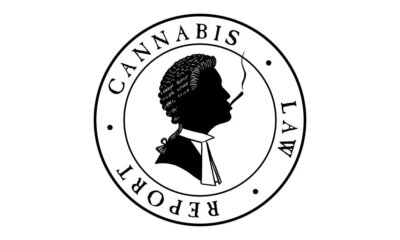
 California Cannabis Updates1 year ago
California Cannabis Updates1 year agoAlert: Department of Cannabis Control updates data dashboards with full data for 2023
-

 Breaking News1 year ago
Breaking News1 year agoConnecticut Appoints The US’s First Cannabis Ombudsperson – Yes there is a pun in there and I’m Sure Erin Kirk Is Going To Hear It More Than Once!
-
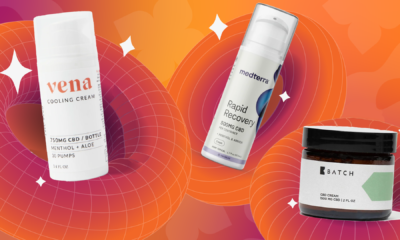
 best list12 months ago
best list12 months ago5 best CBD creams of 2024 by Leafly
-

 Bay Smokes1 year ago
Bay Smokes1 year agoFree delta-9 gummies from Bay Smokes
-

 Business10 months ago
Business10 months agoEU initiative begins bid to open access to psychedelic therapies
-

 cbd1 year ago
cbd1 year agoNew Study Analyzes the Effects of THCV, CBD on Weight Loss
-

 Mississippi Cannabis News1 year ago
Mississippi Cannabis News1 year agoMississippi city official pleads guilty to selling fake CBD products
-

 California1 year ago
California1 year agoMay 2024 Leafly HighLight: Pink Runtz strain
